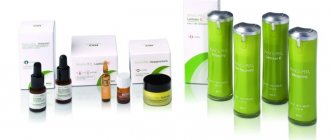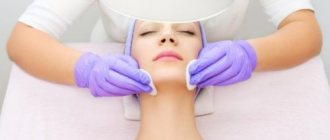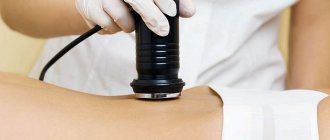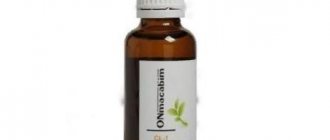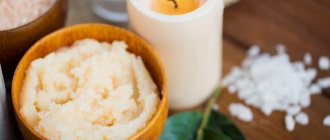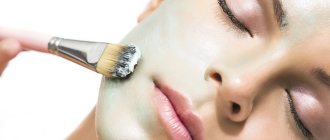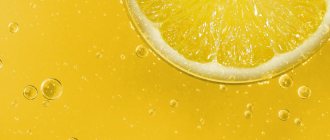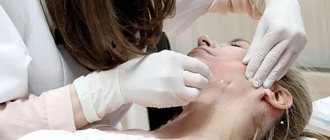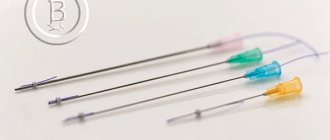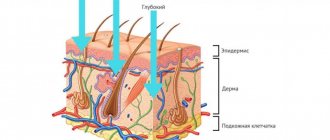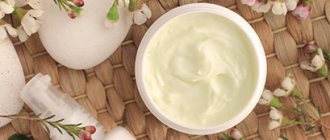Peeling: before and after
Before starting the procedure itself, it is strongly recommended to carry out a set of preparatory measures: consult a doctor and identify possible allergies; to avoid the occurrence of herpes, undergo a course of treatment with immunomodulators; prepare the skin by washing for two weeks with diluted lemon juice (only natural!) in a ratio of one teaspoon per glass of warm boiled water.
After the procedure is over, you may be alerted by strange sensations: the skin seems to be tight. Cosmetic products will help cope with excessive dry skin - primarily moisturizing and nourishing creams, which contain hyaluronic acid, amino acids, proteins, urea, hydrogels, alginates. However, be careful in your choice. Only a doctor can accurately determine the remedy that is right for you.
Active consumption of still water will help restore the lipid barrier, as well as the use of cosmetics containing antioxidants, ceramides and phospholipids, lanolin and wax, panthenol and natural oils - it will have a healing effect.
The most common depigmenting peels
Chemical or acidic
As the name suggests, this type of peeling is based on the use of acid. Most often, glycolic, salicylic, retinol, azelaic, and lactic acids are used to influence dead cells.
The effect of the method is to free the upper layer of the epidermis from pigmentation. It allows you to cleanse pores, remove blackheads, pimples and acne. After the examination, the cosmetologist will determine the required number of sessions. The use of acid peels is very helpful in getting rid of dark and light spots on the skin.
The most popular types of procedures that help even out facial tone:
- TCA peeling. It can only be performed in a professional cosmetology salon. The procedure involves injecting 20–35% trichloroacetic acid under the upper layer of the dermis, which, penetrating deeply into the skin, removes pigmentation and smoothes wrinkles.
- Peeling based on retinolic acid. Recognized as the most effective. Usually one or two sessions are enough, after which redness forms at the site of age spots, and after a while it acquires the same shade as your own skin tone. The main component of this type of peeling is retinol (vitamin A). In addition to its depigmenting properties, the procedure has a lifting effect, helps smooth out scars and scars, and evens out the tone of the upper layer of the epidermis.
- Glycolic acid, introduced under the top layer of skin, has an anti-inflammatory effect, helps get rid of wrinkles, makes the skin more hydrated, and increases elastin production. The spots covering the face and body gradually disappear.
Advantages of the procedure:
- effectively fights pigment spots and other skin imperfections;
- versatility: with the help of glycolic acid you can even out your tone, get rid of scars, wrinkles and acne;
- long lasting effect.
Contraindications:
- allergy to the components of the product;
- unhealed wounds;
- pregnancy;
- lactation period;
- inflammatory process;
- herpes;
- exposure to active sun during the rehabilitation period.
The duration of one course is usually eight sessions of 15–20 minutes each.
Mechanical
This type of peeling is based on the destruction and removal of the upper layer of the epidermis through the use of small solid particles of various substances when treating the skin. Most often used:
- seaweed;
- pieces of raspberry or apricot kernels;
- crushed corals.
This is the most gentle method of depigmentation of facial skin, virtually eliminating its damage. Several procedures can be performed within a month without the risk of injury.
Read the material on the topic: Chemical peeling of the face: your skin will breathe a new breath!
Radio wave
This is a completely safe and painless procedure. The basis of the method is the impact of radio frequency waves of varying intensity on individual areas of the skin.
Under the influence of radio waves of a certain length, epidermal cells are destroyed and evaporated, due to which the process of formation of new young cells is activated, tissues are restored.
This peeling can significantly improve the condition of the skin, even out the color, remove spots without damaging the dermis and does not require surgical intervention. The procedure is performed using a high-tech device that precisely affects the skin at a strictly defined level. This approach completely eliminates the penetration of the destructive wave into other tissues. Thanks to this, there is no risk of scars, stretch marks and other unpleasant consequences.
The radio wave depigmentation peeling process consists of the following steps:
- A radio pulse of a certain range affects the deep layers of the epidermis.
- The cells are heated.
- The process of reducing old protein fibers and breaking down fats accelerates.
- The mechanism of tissue repair and the production of its own collagen is activated.
The effect of deep radio wave peeling is comparable to the effect of laser facial cleansing. The procedure is quite lengthy: the average time it takes can be an hour or more. At the same time, it allows you to achieve excellent results: the dermis becomes smoother and tighter, hyperpigmentation disappears, and pores become narrower.
In some clinics and medical centers you can find another name for this technique - radio wave lifting, which is explained by its ability to activate collagen production, optimize water balance, and increase skin elasticity.
But it is worth remembering that, as with any other type of manipulation, before starting the procedure you need to make sure that there are no contraindications to its implementation.
Sequence of operations:
- Cleansing skin that will be exposed to radio waves. A special approach requires the preparation of problem areas of the dermis.
- Application of a special composition, the use of which is necessary to create a certain contact environment that ensures the effectiveness of radio wave influence, and also makes the process safe.
- Using electrodes attached to the treated areas of the skin, an electric current is carried out, which heats the tissue to the desired temperature. Overheating of cells or burns of the dermis is eliminated through the use of a special thermometer.
To perform radio wave depigmentation peeling, a device equipped with various attachments with recesses around which electrodes are located is used. An electromagnetic wave occurs in the recesses through the created vacuum. The attachments allow for targeted heating of specific areas of the skin.
Today you can choose a portable device for performing radio wave peeling at home.
Recommended articles on the topic:
- How to properly care for your skin
- How to remove wrinkles on the face: the most effective methods
- Microcurrent facial therapy is a beneficial treatment for your skin
Laser depigmentation peeling
This method is one of the most effective in combating uneven skin color. Even one session allows you to achieve quite tangible results. The laser targets a specific area of the skin, removing dead cells and stimulating natural collagen synthesis. Usually, 6-8 sessions are enough to completely get rid of age spots.
Advantages of laser depigmentation peeling:
- complete security;
- absolute painlessness;
- rejuvenating effect;
- complete removal of pigment spots.
Read material on the topic: Lightening age spots: 11 beauty recipes
When talking about peeling, it is customary to distinguish three stages of exposure.
- In the first (superficial) procedure, only the upper (dead) layer of skin is affected. Care after the procedure in this case is simple. Peeling does not last long (on average - 3 days), and after 10 days there will be no trace of unpleasant sensations. You can wash your face with water on the second day, and apply cosmetics on the third, taking into account your skin type and provided that you use hypoallergenic products with a high level of ultraviolet protection and antibacterial properties. Do not forget to drink enough liquid (soda, juices and tea - not counts), monitor skin hydration and avoid repeated procedures for two weeks. Side effects with this type of peeling are limited to redness;
- at the second (middle) cleaning extends to the epidermis at the cellular level (including the basement membrane). In this case, care measures will be more serious. This is due to the high level of soft tissue injury. The full course of rehabilitation lasts up to one and a half months, and the period of peeling is limited to 10 days. The procedure is justified by the result, which allows you to get rid of even moderate wrinkles. You are allowed to wash your face for the first time on the third day, without using traditional soap (products with a pH level of 5-6 are acceptable). Earlier contacts with water are prohibited. Starting from the third day, you can use healing products, creams and masks with a calming effect. Omega-3 fatty acids are recommended. When leaving the room, it is necessary to apply a protective cream with an index of more than 50. As with superficial peeling, redness and swelling may occur;
- on the third (deep) treatment reaches the reticular and papillary layers of the dermis. Chemical peeling often involves a rehabilitation period in a clinical setting. The full course of rehabilitation takes up to six months, but the effect exceeds any expectations: you can visually look more than 10 years younger (a similar result can only be achieved with laser exposure). The recovery period takes place under the constant supervision of the attending physician; this method of peeling and rehabilitation is impossible at home and is fraught with severe consequences, including death. During the healing process, the patient is prescribed a course of antibiotics. Washing and any contact of the treated area with water is possible no earlier than the fourth day! Liquid intake is recommended through a cocktail straw. Any skin care products containing alcohol are excluded. The use of specialized medicinal cosmetics and protective creams with the maximum degree of protection against ultraviolet radiation is prescribed.
Side effects include temporary darkening of the skin.
Why do pustules appear on the face*?
If pustules* appear on the face, the reasons may be associated with the following internal and external factors4,50:
- Hormonal changes in the body, for example, during adolescence, during pregnancy, during the premenstrual period.
- Gastrointestinal diseases, gynecological diseases (polycystic ovary syndrome, etc.).
- Small red and white rashes may appear due to the use of cosmetics with comedogenic ingredients.
- Improper hygiene (lack or excess) leads to disruption of the normal microbiome, drying out of the epidermis, and the formation of open and closed comedones.
- Injury to the skin as a result of squeezing out acne, rubbing with clothing, etc.
Abscesses* on the face appear, among other things, due to the use of corticosteroids and other medications.
Recommendations and possible complications after peeling
In order not to get confused in the recommendations, we decided to arrange them for you according to the time criterion. So:
- on the first day, washing, using cosmetics and creams, physical touching, and leaving the room are contraindicated;
- From the 2nd to the 14th day, experiments with cosmetics, exposure to ultraviolet rays (both solar and artificial), visiting saunas and baths, hot baths, walking without protective cream, stressful situations, active physical activity, and drinking alcohol are not allowed. and scrub procedures;
- The general rule is not to forcefully exfoliate your skin. It is necessary to wait for complete healing, after which all problems will disappear on their own. Do-it-yourself activities in the early stages can lead to scars!
Swelling, redness, dehydration, burns and peeling are natural side effects of peeling. The solution is to use protective, moisturizing and nourishing creams, medications high in antioxidants, drinking water, and physical and emotional rest.
However, complications are possible that require specific therapy: for example, in the event of herpes, antiherpetic drugs are prescribed in combination with pulse therapy; the active appearance of acne is blocked by zinc-containing products and antiseptics for external use; in case of pigmentation disorders, drug treatment is determined by the doctor, and allergic reactions will be avoided by preliminary examination and the use of antihistamines and hypoallergenic drugs.
Side effects disappear on their own within a few days (with proper care). It is impossible to predict their appearance, since each person’s body has its own individual characteristics. If we talk about complications, they usually do not arise on their own, which means that the prerequisites for their occurrence were violations of the rules of the procedure or care during the rehabilitation period.
Preventing Acne
To prevent acne from appearing during the rehabilitation stage after peeling, you should follow the recommendations below:
- In the first days, stop using decorative cosmetics.
- Reduce exposure to direct sun and heat to a minimum.
- When going outside in any weather, treat your skin with a cream with a high level of UV protection.
- Do not use scrubs or other traumatic home procedures.
- Use skin care products recommended by a cosmetologist that are suitable for your skin type. For washing, choose gels and foams that have a light texture, are well absorbed, and moisturize the skin from the inside.
- Do not touch your face with your fingers, otherwise the skin may become infected through microcracks.
- Moderate physical activity. Temporarily avoid exercises that cause excessive sweating. Until the functioning of the sebaceous glands is normalized after peeling, the skin is deprived of a protective film, and the sweat produced causes irritation.
How to choose the right depigmentation peeling
When choosing the most suitable method for removing age spots, you must consider:
- absence of chronic diseases, allergies;
- general state of functioning of the body;
- hormonal balance;
- planning a baby or pregnancy;
- optimal cost of the procedure;
- season.
So, now we have found out that to even out skin color, you can use either acidic or hardware methods, which today are quite effective and relatively safe. Moreover, all of these methods of influence have a number of useful properties.
Any procedure that requires the use of fairly aggressive components is best left to specialists. If you still prefer to carry out depigmentation peeling at home, be sure to consult with professionals before the session and clarify the possible risks and options for dealing with them. To choose the best method for you, study the reviews of masters and those who already have experience using one or another method.
Read material on the topic: Retinoic yellow peeling done by Hollywood stars
Depigmenting peeling at home
Modern cosmetology allows you to carry out the depigmentation peeling procedure at home. This is much cheaper, but often less effective.
Exfoliating products for use at home do not have an immediate whitening effect. Therefore, when using scrubs, in any case, you need to use other products.
Let's take a look at some homemade peeling recipes to even out your skin tone.
- Citrus.
As a base, you can use lemon, lime or grapefruit juice with added sugar. The mixture is mixed well and applied to the face. The mask must be washed off with warm water after 10 minutes.
- Oatmeal classic peeling.
Grind a quarter cup of oatmeal and add three to four tablespoons of lemon juice. The resulting scrub is rubbed into the skin. The mask is washed off after drying.
- Depigmenting peeling based on badyagi and hydrogen peroxide.
Badyagu and hydrogen peroxide are mixed in a 1:1 ratio. The resulting mass is rubbed in and left on the face for about 10 minutes.
When performing a depigmentation peeling procedure at home, be sure to cleanse your skin before applying the product and moisturize after. Maximum time and attention should be devoted to preparing and restoring the dermis.
Read material on the topic: How to care for facial skin: home care and salon treatments
Who cannot undergo Jessner Peel treatment?
There are several conditions that are considered contraindications for those considering acne treatment with a Jesner peel:
- Active colds, sunburn, or severe asthma;
- Lupus;
- Eczema;
- Rosacea;
- Psoriasis;
- Pregnancy;
- Chronic skin diseases and dermatitis conditions.
- The use of Jesner peeling for such diseases can definitely provoke the appearance of new acne and other side effects on the face.
Should I avoid sun exposure when using glycolic acid products?
Poll: When did your acne appear? (Number of votes: 4295)
I've been suffering all my life
It's been a couple of years now
About a few months
Recently
To vote, click on the desired answer. results
Absolutely, you should always wear sunscreen applied hourly to prevent damage to the skin structure and the appearance of pimples or redness on your face. Your new fresh skin is now like a baby's skin and it is quite sensitive and needs protection.
